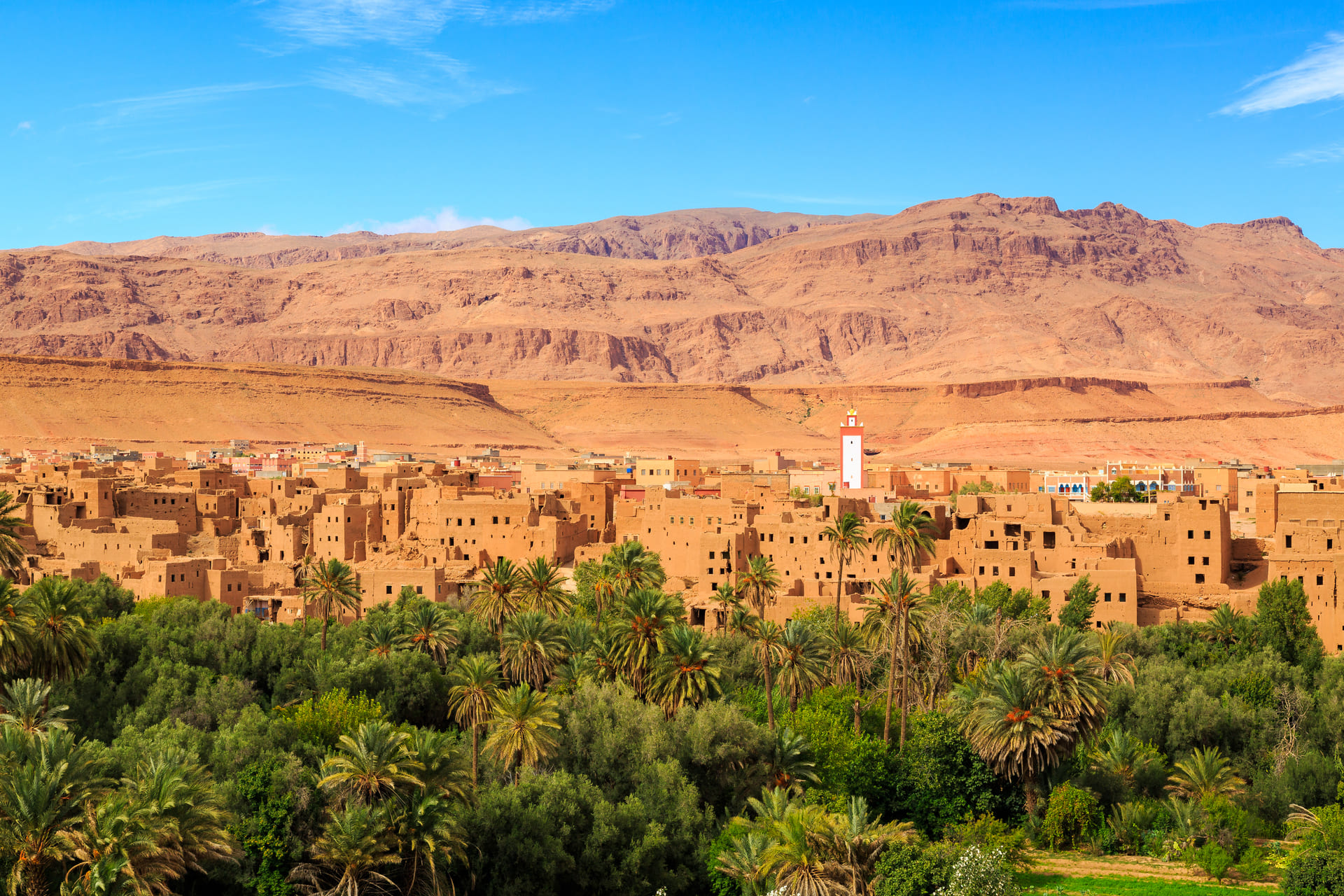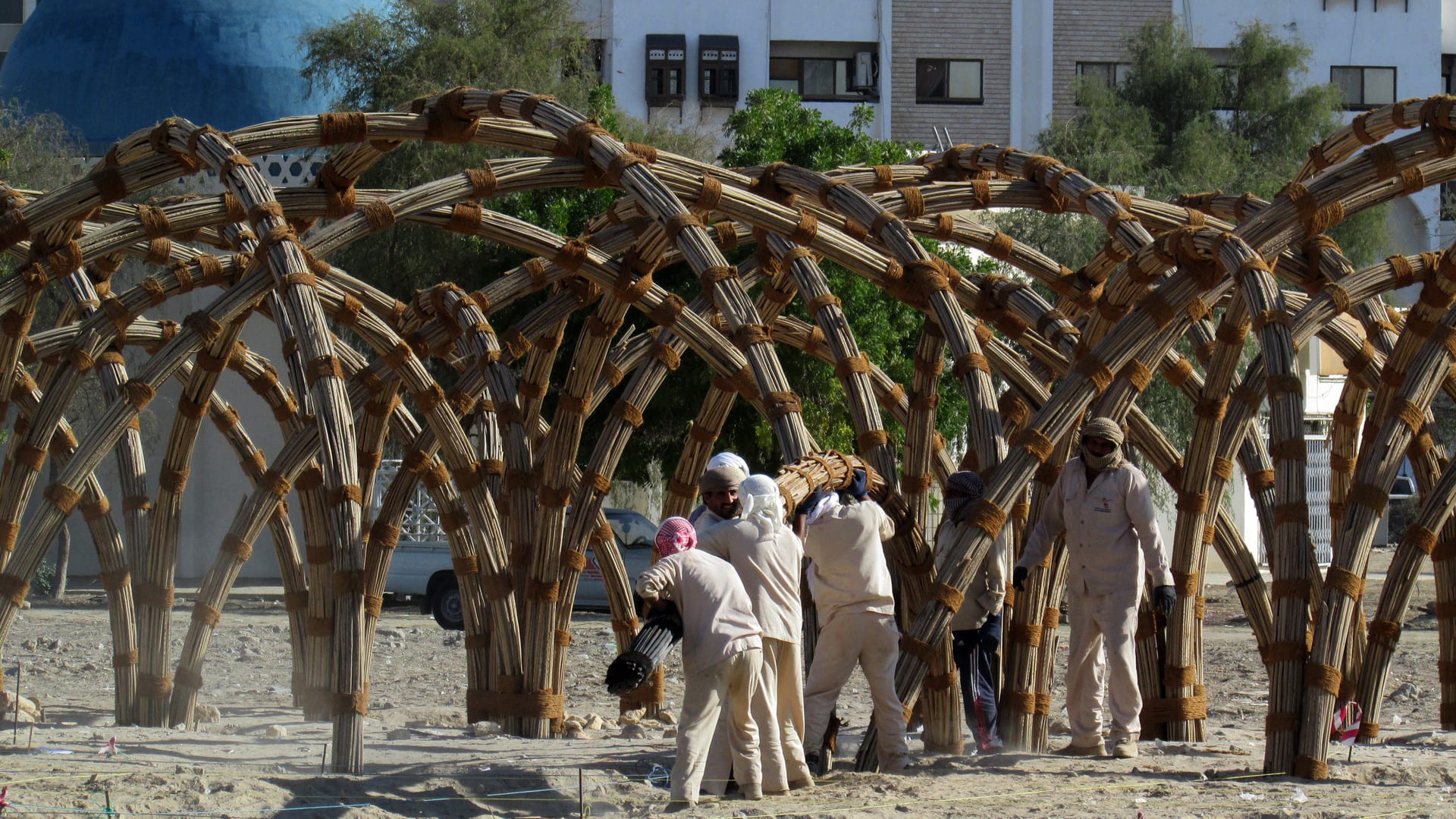Territorial integration and agricultural capacities of drylands
Meeting regional food production needs is an almost impossible challenge in dry, arid climate zones, which exist in over 100 countries. Solutions for these areas are being sought through agricultural research and the adoption of ancient practices focussed on co-benefits of oasis ecosystems.

Addressing dryland food security with traditional oasis farming techniques
Historically, oasis food production would involve cultivation around 60 different plant species. A practice which contributed both to biodiversity and diversity of diet. Today, however, in some regions this is now limited to just one or two plant species. The lack of food security in drylands due to their low percentage of arable land, compounded by the adverse effects of climate change, calls for changes in how these places are farmed. Re-engaging with traditional practices, in an adapted way, may be an effective solution for mitigating the adverse conditions being experienced today.
Date palms are key to oasis ecosystems
Date palms are very beneficial to other types of crop production because they help create an oasis effect1. As well as providing shade, their leaves transpire relatively large amounts of water. This helps to cool the immediate environment, while increasing its humidity. Cultivating date palms alongside fruit trees helps protect more delicate crops, enabling production of fruit and vegetable species which are more sensitive to heat and water conditions.

The need for self-sustaining rural-urban territorial models
As well as being beneficial for sustainable food production, the oasis effect extends to create improved microclimates in nearby cities. These two environments have a 5,000-year history of co-existence equilibrium. But since the 1980s, uncontrolled expansion of urbanisation, driven by a lack of appropriate legislation and westernisation, has destroyed that equilibrium. This has resulted in a number of adverse effects, as well as social changes in the relationships between communities and their indigenous cultures.
Ancient oasis cities of North Africa and the Middle East, such as Tozeur in Tunisia, Siwa Oasis in Egypt, Nizwa Oasis in Oman and Liwa Oasis in the United Arab Emirates, offer compelling stories of self-sustaining models of urbanism and agriculture. Based on food production, productivity and prosperity, these have stood the test of time and changing climatic conditions.
Restoring equilibrium
The post-2030 future calls for finding contemporary iterations of these holistic models. Modern day solutions that also meet current social aspirations, as part of the invaluable goal of aiming to end hunger and poverty in drylands. New forms of indoor food production will bring co-benefits. But it is the land and restoration of the oasis ecosystem that will bring long-term resilience to climate change and the desertification consequences. The use of frontier technologies such as blockchain, together with regional approaches to urban planning, can enhance connectivity to oasis ecosystems where self-sustaining developmental models are needed.
1 Dr Abdelouahhab Z. Zaid, Dates for Sahel Project
Industrial sectors
- Agriculture, forestry and fishing
- Water supply; sewerage, waste management and remediation activities
- Construction
- Wholesale and retail trade; repair of motor vehicles and motorcycles
- Transportation and storage
- Accommodation and food service activities
- Professional, scientific and technical activities
- Education
- Human health and social work activities
- Activities of households as employers; undifferentiated goods- and services-producing activities of households for own use
Habitat at the New European Bauhaus Festival and the STI Forum
This story is part of “Habitat: Embracing change in the post-2030 future”. Habitat was discussed at the side event “New habitats for the post-2030 future” during the New European Bauhaus Festival on 10 June 2022. At the STI Forum of 2023, a science policy brief recommendation on Habitat was published under the category “science-policy-society interface”: Enablers for transformative change to sustain people and nature-centred world. Download recommendation >
Contribution to story
- This is “HABITAT: Embracing Change in the Post 2030 Future” Exhibition designed and curated by Dr Sandra Piesik, 3 ideas B.V in collaboration with HABITAT Coalition and VITO
- Copy editing by Katleen Vandormael, Communication Manager G-STIC, VITO
- Cover image: Landscape of a typical moroccan berber village made of red stone with oasis in the valley © Peter Wollinga, Shutterstock
- “HABITAT: Vernacular Architecture for a Changing Planet” published by Thames & Hudson
- “HABITAT: Vernacular Architecture for a Changing Planet” published by Abrams
- “Habitat: Traditionelle Bauweisen für den globalen Wandel” published by DETAIL Special
- “Habiter la planète: Atlas mondial de l'architecture vernaculaire” published by Flammarion First Prize Winner at “J’aime le livre d’art”, Paris 2017
- “HABITAT: Arquitectura vernácula para un planeta cambiante” published by Blume
- “HABITAT: Vernacular Architecture for a Changing Climate’ published by Thames & Hudson UK, USA, and Shufuhsa
